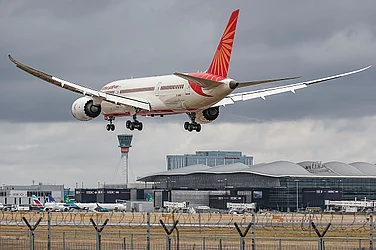At least 261 persons have been killed and around 900 have been injured in the Odisha train accident.
The triple-train accident at Odisha's Balasore on Friday evening also brought back memories of similar accidents of the year.
From Bagmati train accident to the Odisha tragedy, hundreds of people have been killed in a number of train accidents, ranging from derailments to fires.
Here we explain what we know so far of the Odisha accident and understand the reasons for train accidents.
What do we know so far of the Odisha accident?
The Odisha train accident happened at around 7 pm on Friday evening at Balasore.
Three trains were involved in the accident, inluding two passenger trains and a goods train.
Several coaches of the 12864 Bengaluru-Howrah Superfast Express, on the way to Howrah, derailed and fell on adjacent tracks, an official told PTI.
"These derailed coaches collided with the 12841 Shalimar-Chennai Central Coromandel Express and its coaches capsized too," he said.
The derailed coaches of the Coromandel Express hit the third train, a goods train, according to this official.
Railway Minister Ashwani Vaishnaw announced an inquirty into the accident.
The inquiry into the train accident will be led by A M Chowdhary, Commissioner, Railway Safety, South East Circle, the Indian Railways said in a statement. The Commissioner, Railway Safety comes under the Ministry of Civil Aviation. The separation has been done to ensure the independence of inspectors from the administrators of the railway.
As per the latest reports, a total of 261 people have been killed and around 900 have been injured in the Odisha accidents.
What's behind such train accidents?
The Odisha train accident is not the first of its kind.
Derailments are not that rare among rail accidents. Incidents of multiple trains being derailed around the same time have also been reported.
On November 26, 1998, the Jammu Tawi–Sealdah Express collided with three derailed coaches of the Frontier Golden Temple Mail in Khanna in Punjab. The accident killed 212 people.
With 223 dead, the Friday's Odisha train accident is the fourth deadliest train accident in India, according to PTI.
There are four major kinds of train accidents in India:
- Derailment
- Level crossing accidents
- Collisions
- Fire
While investigations are carried out after accidents that determine the causes and conditions unique to every accident, there are certain broad causes behind Indian train accidents: human error, equipment failure, sabotage, and climatic or conditional causes.
"Out of total accidents occurred in Indian Railway derailments [during 2000-16], level crossing accidents, collisions, and fire accidents were 58 per cent, 32 per cent, 5 per cent and 3 per cent, respectively. Eighty-five per cent accidents were caused due to human error, whereas failure of equipments and sabotage contributed to 5 per cent and 4 per cent accidents, respectively," reported Satish Bhagwatrao Aher and Deepak Raj Tiwari in a paper International Journal of Reviews and Research in Social Sciences (IJRRSS).
A report published by the Indian Railway says that failure of the railway staff was the top reason for train accidents during 2000-05.
The failure of railway staff was followed by failure of persons other than Railway staff and failure of equipment.
Sabotage was fourth on the list of causes and incidental causes ranked sixth.
"'Incidental' causes include acts of nature like falling of boulders, sinkage of track due to heavy rain and cattle getting run over, etc," saus the report on the railway website.
Aher and Tiwari in their paper cited above also note that "unbalanced rise in rail traffic" is also a factor and "over saturation of rail tracks which exceeded the 'safe' limit" also leads to accidents.
"Railway accidents, especially derailment commonly caused due to broken rails and welds. The adaptation of new technology gradually decreased the railway
accidents[18,19]. The consequential train accidents over the years has been showing declining trend despite phenomenal growth of traffic but emphasis on
improvement of infrastructure, resources and functional empowerment is essential to tackle the worst disasters," note the authors.
(With PTI inputs)


























